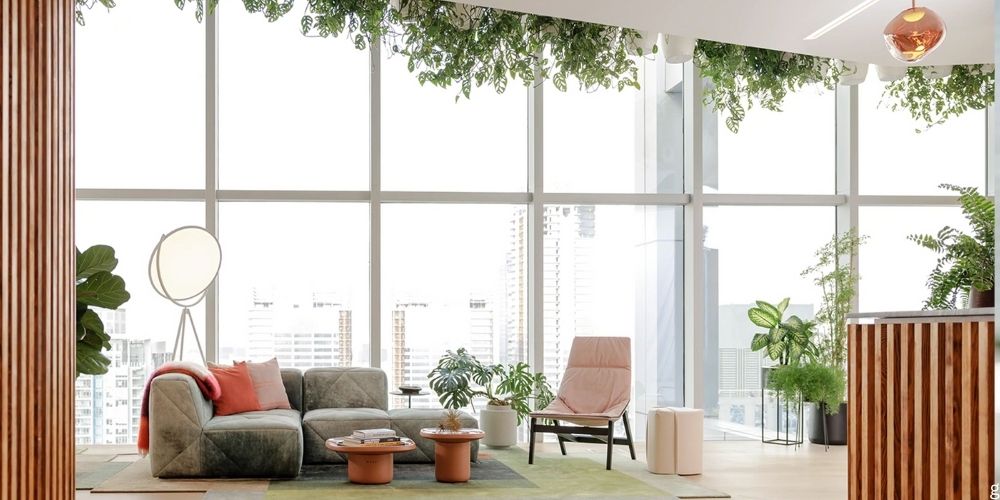In our Four Macro Shifts Changing Work Now series, we’ve explored Living on Screen, The AI Supercycle, and The Sustainability Mindset. If you haven’t read those yet, be sure to check them out. Now, we turn our attention to the fourth and final shift: The Employee Wellbeing Urgency.
Talk to an HR professional, and they’ll tell you one of their biggest concerns is employee mental health. Headlines and book titles say it all: The Lonely Society, Employee Mental Health is a Global Issue, and for future workers, The Anxious Generation. Stress, anxiety, depression, and difficulty concentrating are top concerns for employers worldwide, according to WorkPlace Options, a global provider of employee solutions.
Hybrid work and the flexibility it offers were supposed to improve work-life balance, yet research suggests otherwise. According to Steelcase global research, people’s satisfaction with their work-life balance has declined over the past three years, while productivity has remained consistent.
Finding Balance
People are increasingly prioritizing their wellbeing. In fact, a Steelcase global study found that employees now rank wellbeing as second in importance—only behind family. Surprisingly, work comes in fourth place. This disparity creates tension as leaders attempt to strike a balance between supporting people’s needs and driving organizational success.

What’s Going On?
It would seem logical that, with the pandemic in the rearview mirror, people should feel better. Yet multiple factors—personal, professional, and even societal—are driving mental health challenges. One major contributor is the accelerating rate of change in the workplace. Sociologist and author Brené Brown describes this as living beyond human scale.
The Numbers Speak for Themselves
A 2024 Microsoft Work Trend Index found that:
- 68% of people struggle with the pace and volume of work.
- 46% of employees feel burned out.
- 66% of employees globally reported not thriving in 2023, according to Gallup.
- 69% of employees under 35 report struggling—indicating younger generations are disproportionately affected.
The speed of change impacts both employees and managers, leading to stress and disconnection. Gallup research highlights job restructuring, budget cuts, and increased responsibilities as primary stressors. Meanwhile, hybrid work has altered the rhythm of our days, increasing meeting volume and workloads, which can lead to burnout and reduced creativity.
When employees come to the office but their colleagues don’t, they miss out on social connections that foster a sense of belonging and shared purpose. Without these, people can feel unsupported and isolated.

A Better Workplace Experience
Liz Hilton Segel, McKinsey Senior Partner, emphasizes why employee wellbeing must be a business priority:
“Businesses should treat wellbeing as a tangible skill, a critical business input, and a measurable outcome. Wellbeing not only makes for happier, more productive employees, but it’s tied to innovation and organizational success.”
Organizations are responding. According to a 2024 Steelcase study, 38% of global leaders are prioritizing employee wellbeing over the next two years—second only to improving collaboration. The study also highlights a rising focus on supporting rejuvenation.
Designing for Effectiveness and Experience
To create a thriving workforce, organizations must offer spaces that support wellbeing. Gensler’s Global Workplace Survey 2024 advises balancing effectiveness with employee experience, suggesting that companies measure how people feel about the space—not just its functionality.
Key priorities include:
- Privacy & Rejuvenation Spaces – Employees need areas that support focus, reflection, and mental reset.
- Inclusive Design – Workplaces must consider diverse needs, including neurodivergent individuals who require controlled sensory environments.
- Support for Mental Health – HR initiatives, flexible work options, and open discussions help break stigmas and build supportive environments.
- Joyful Workspaces – Natural elements and beautiful design can help reduce stress and enhance wellbeing.
A People-First Approach
As hybrid work evolves and employees return to the office more frequently, organizations must remove barriers and ensure workplaces cater to diverse needs. When employees see that their preferences are acknowledged, they feel more valued and engaged.
Steelcase research underscores this point: privacy and spaces that support employee wellbeing are the two most desired workplace attributes. Yet many employers overlook these needs, instead prioritizing collaboration spaces for hybrid workers.
To support employees holistically, organizations must incorporate lactation rooms, private spaces for physical and mental health needs, and quiet areas for reflection. A well-designed office should be welcoming, safe, and inclusive—helping people feel they truly belong.

Inclusive Design in Action
Steelcase’s Global Talent team recently redesigned their Grand Rapids campus space with inclusivity in mind. They established an Inclusive Design Advisory Group, ensuring diverse perspectives shaped the new environment. The group, composed of employees with varied lived experiences—including neurodivergent individuals, first-generation immigrants, and caregivers—helped remove barriers and create a more welcoming space.
This people-first approach demonstrates that workplace design isn’t just about aesthetics—it’s about fostering a culture where employees feel seen, valued, and empowered.
Wellbeing: A Win-Win Strategy
By embracing inclusive design, prioritizing rejuvenation spaces, and fostering a culture of wellbeing, organizations can drive both employee satisfaction and business success. When companies recognize employees as whole individuals—not just workers—they create environments where people can thrive.
As this series comes to a close, one thing is clear: The future of work is changing rapidly. To navigate it successfully, businesses must be intentional about how they design their workplaces, integrate technology, and support their people. Prioritizing wellbeing isn’t just good for employees—it’s essential for long-term organizational success.
*Research and article adapted from Steelcase



